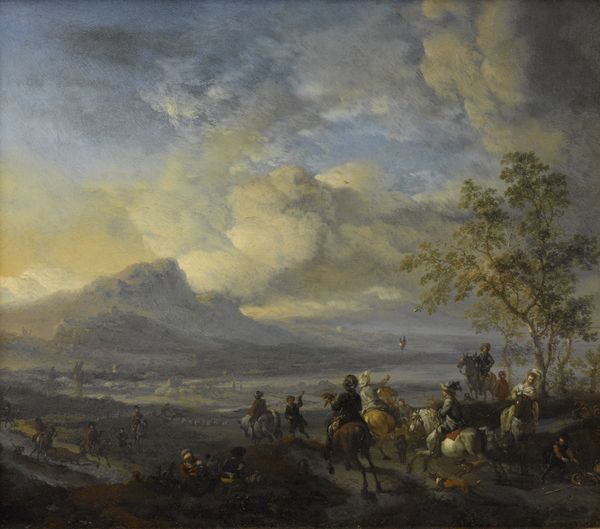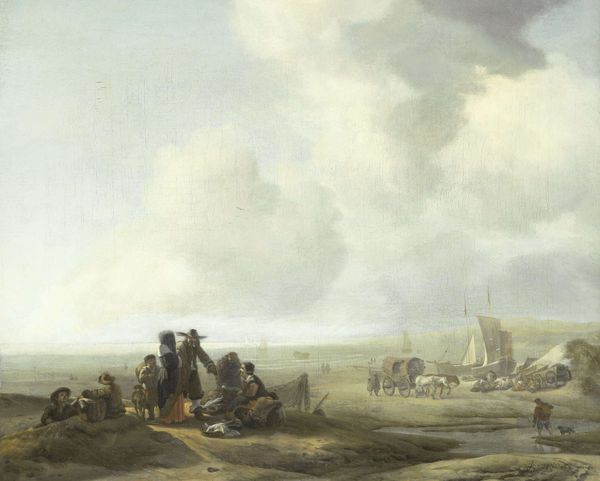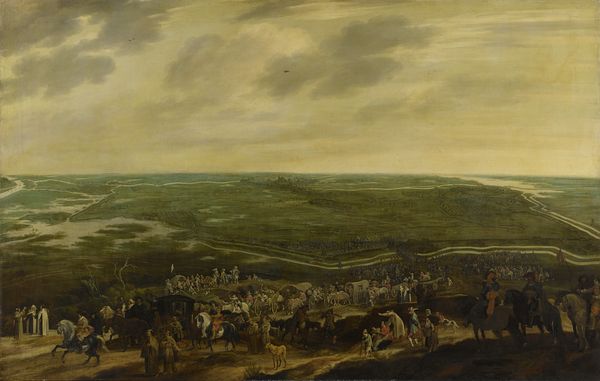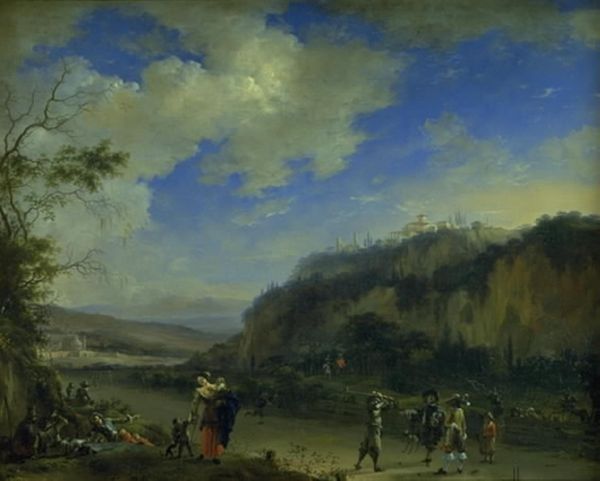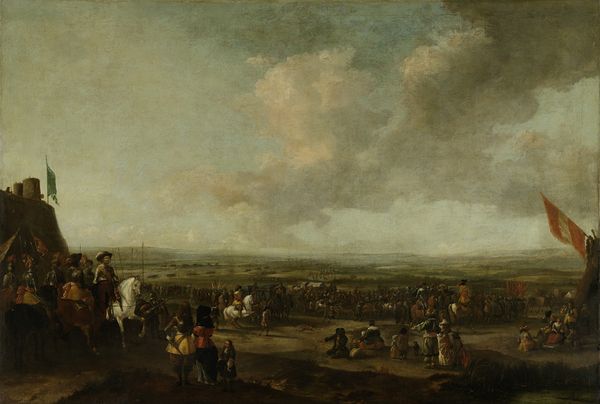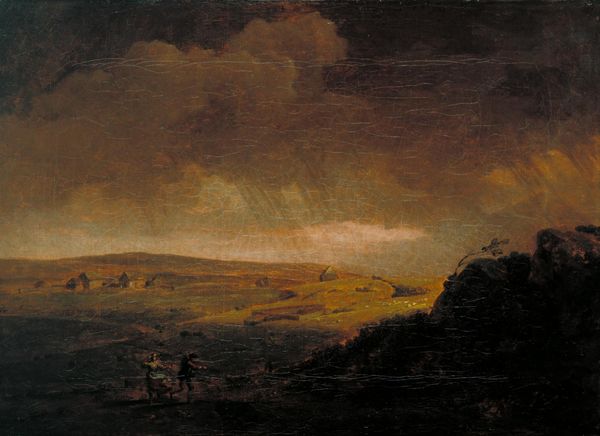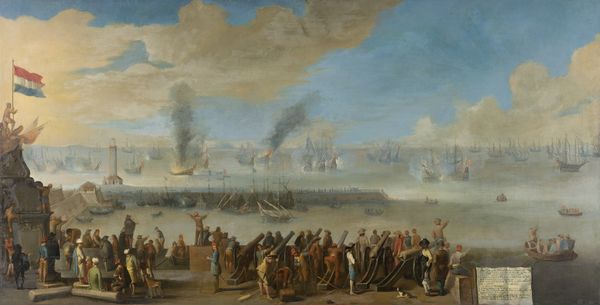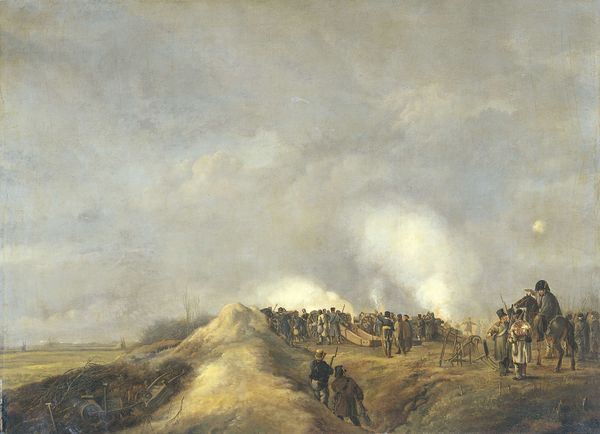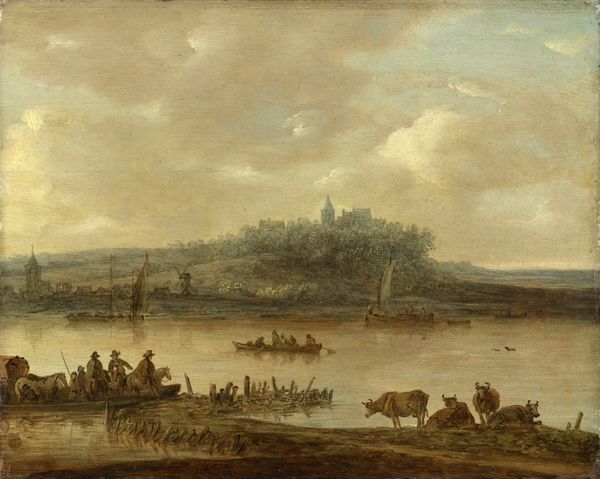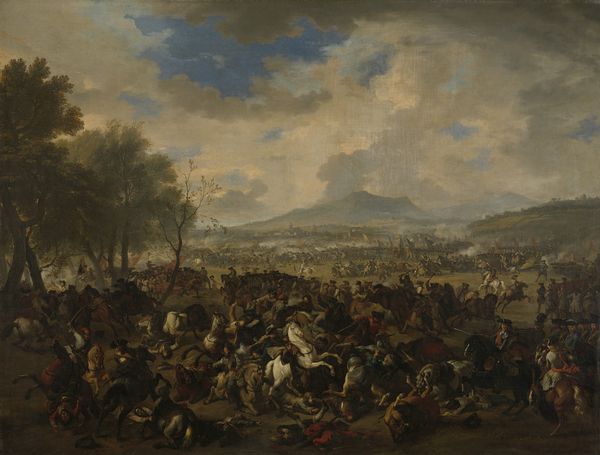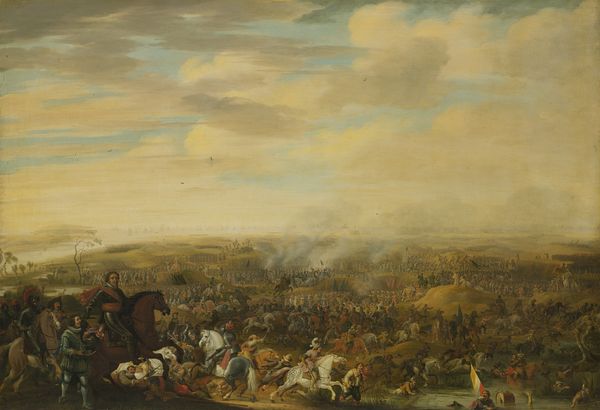
painting, oil-paint
#
sky
#
baroque
#
painting
#
oil-paint
#
landscape
#
cloud
#
painting painterly
#
genre-painting
Copyright: Public domain
Here we have an oil on canvas painting by Claude-Joseph Vernet, who was born in 1714 and died in 1789. As we observe this piece, let’s consider how gender, race, and class dynamics are subtly woven into the fabric of the landscape. The artist lived in a world in which class distinctions were sharply defined. Vernet's landscapes often romanticize nature, but it is worth reflecting on the labor and social hierarchies that enabled such idealized visions. Who are the figures in this piece? What are their stories? While Vernet's artwork seemingly perpetuates conventional representations of nature, consider the emotional and personal dimensions of the piece. Is this landscape a reflection of the artist's own longing for beauty and harmony, or is it a commentary on the human relationship with the natural world? Let’s consider how this artwork shapes or mirrors the societal issues of its time, while still acknowledging the deeply personal and emotional dimensions it evokes.
Comments
No comments
Be the first to comment and join the conversation on the ultimate creative platform.

